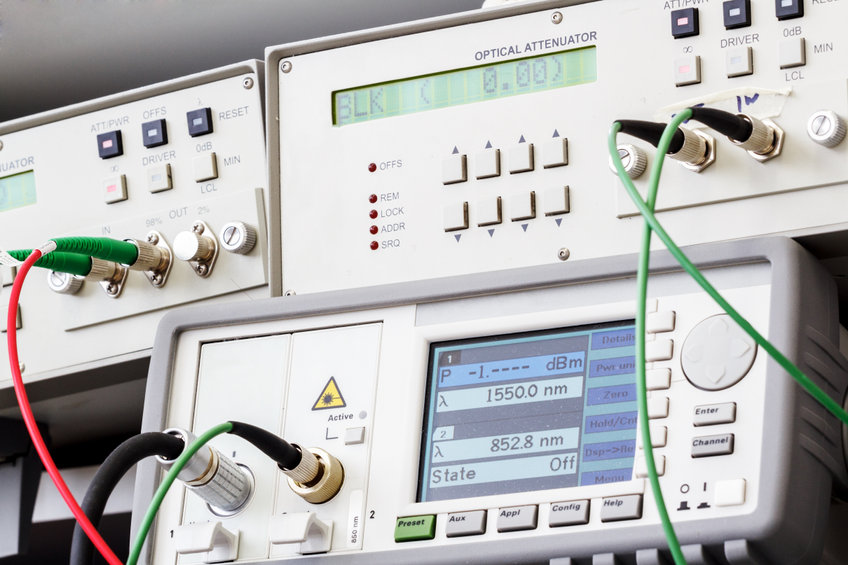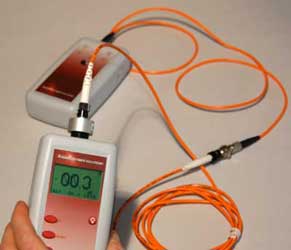The Role of Optical Fiber Screening in Ensuring Top Quality and Performance in Connection Solutions
In today's quickly developing electronic landscape, the value of optical fibre screening can not be overemphasized, as it serves as a cornerstone for ensuring the top quality and effectiveness of connectivity remedies. As innovation proceeds to advancement, the future of optical fibre screening presents appealing difficulties and chances that warrant closer assessment.
Relevance of Optical Fiber Testing
The value of optical fiber testing can not be overemphasized in ensuring the honesty and performance of interaction networks. As the foundation of modern-day telecoms, optical fibers help with high-speed data transmission, making their dependability essential to operational success. Testing serves as an aggressive action to recognize prospective issues such as signal loss, depletion, and physical damage, which can compromise network efficiency.
Normal testing permits the confirmation of installation high quality and the detection of flaws that could impact data integrity - optical fibre testing equipment. By utilizing strenuous testing procedures, network drivers can minimize the dangers connected with network failings, consisting of downtime and financial losses. Optical fibre screening ensures compliance with industry requirements and guidelines, boosting the total quality of solution offered to end-users.
Inevitably, the organized assessment of optical fibres adds to the long life and effectiveness of interaction systems. It enables stakeholders to make informed decisions regarding upkeep, upgrades, and troubleshooting. In a landscape where data is increasingly important, focusing on optical fibre testing is essential to sustaining durable and efficient connection services, thereby sustaining the demands of contemporary electronic settings.
Kinds Of Optical Fiber Tests
Different testing techniques are utilized to guarantee the functionality and dependability of optical fibres within communication networks. These tests can be broadly categorized into two main kinds: setup tests and maintenance tests.
Installment tests are performed immediately after the setup of optical fiber cables to validate their performance and honesty - optical fibre diameter analyser. The most usual installment tests include Optical Time-Domain Reflectometry (OTDR) tests, which analyze the quality of the fibre by identifying mistakes or breaks, and end-to-end loss examinations, which measure the overall optical loss from one end of the fiber to the various other
Maintenance examinations, on the other hand, are done regularly to ensure continuous performance and identify possible concerns with time. These include visual assessment, which checks for physical damages or incorrect setups, and continuity tests, which confirm that the signal can go through the fiber without disruption.
Furthermore, progressed examinations such as Polarization Mode Dispersion (PMD) and Chromatic Dispersion (CD) examinations can be conducted to evaluate the fibre's efficiency under various conditions. By using these varied testing techniques, service technicians can keep high requirements of high quality and dependability in optical fiber networks.
Benefits of Routine Testing
Normal screening of optical fibers plays an essential duty in preserving the total efficiency and reliability of communication networks. By carrying out routine assessments, organizations can make sure that their fiber optic setups meet industry criteria and run successfully. This positive approach assists to identify possible weaknesses and degradation over time, enabling prompt treatments before problems intensify.

Cost-effectiveness is another benefit. By addressing small concerns early, companies can stay clear of the high expenses linked with significant fixings or system failings. Normal screening also cultivates compliance with governing demands, making certain that the network follows required security and efficiency standards.
Usual Concerns Recognized
Identifying common problems in optical fiber networks is essential for preserving optimal performance and reliability. Numerous variables can add to disruptions, consisting of physical damages, inadequate installment methods, and environmental influences.
Physical damage, such as bends, breaks, or abrasions, can considerably break down signal high quality. Incorrect installation techniques, consisting of excessive tension or inadequate securing of cords, might lead to boosted attenuation and loss of connection. In addition, ecological factors such as temperature fluctuations, wetness ingress, and rodent interference can jeopardize the honesty of the fibre.
Adapter issues also often emerge, with incorrect alignment or contamination causing increased insertion loss. Splicing mistakes can present considerable signal destruction if not implemented with accuracy.

Resolving these usual problems via normal optical visit here fiber testing not only improves network dependability but additionally maximizes total efficiency, making certain that connectivity remedies stay robust and efficient.
Future Patterns in Checking
As the demand for high-speed connectivity continues to rise, the future of optical fibre testing will progressively concentrate on automation and advanced analytics. The integration of fabricated knowledge (AI) and maker understanding (ML) in testing processes will certainly allow a lot more effective information analysis and predictive upkeep, minimizing downtime and enhancing total network dependability. Automated screening remedies will simplify the assessment and certification of fibre networks, decreasing human error and raising testing throughput.
One more significant fad is the adoption of remote screening innovations. As the implementation of fibre networks expands into remote and underserved areas, remote screening abilities will enable professionals to check and identify network problems without physical presence, consequently minimizing functional prices and enhancing reaction times.
Moreover, there will be a shift towards more thorough testing criteria that incorporate not only conventional loss measurements yet likewise his comment is here performance metrics such as latency and data transfer usage. This holistic method will certainly help with much better network administration and optimization techniques.
As these fads develop, the optical fiber screening landscape will not only improve the quality and efficiency of connectivity remedies yet additionally support the growing complexities of modern interaction networks.
Conclusion
Finally, optical fiber screening functions as a fundamental part in keeping the stability and efficiency of communication networks. By systematically analyzing numerous criteria through developed testing approaches, potential issues are identified and corrected, making certain optimum performance. The continuous dedication to normal testing not only enhances information transmission but likewise straightens with industry criteria, cultivating dependability in network infrastructures. As innovation develops, the value of ingenious screening techniques will remain to grow, additional progressing connection services.